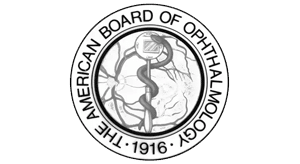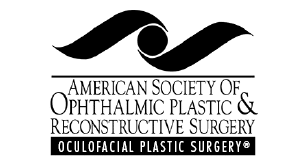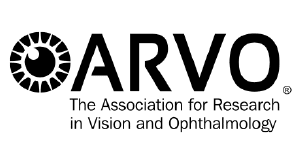Patients aren’t alone in their struggles, and the emotional impact of TED is normal and valid. While the condition can be devastating, proper treatment can help patients return to normal life, though some emotional effects may linger.
This presentation from Dr. Alon Kahana focuses on the emotional impact of thyroid eye disease (TED), an often overlooked aspect of the condition. While medical and surgical treatments have advanced significantly, the emotional aspects remain understudied and undertreated.
Key Points:
1. Thyroid hormone affects nearly every system in the body, including emotional centers in the brain
2. The effects of thyroid dysfunction can persist long after treatment begins, like “a train that doesn’t just stop”
3. Physical symptoms have significant emotional impact:
– Constant eye discomfort/pain
– Changes in appearance leading to social stigma
– Vision problems affecting daily activities and employment
Case Studies:
1. 38-year-old man:
– Personality changes led to job loss
– Developed severe eye disease after radioactive iodine treatment
– Eventually recovered but remained traumatized
2. 17-year-old girl:
– Misdiagnosed with bipolar disorder
– Behavioral issues and substance abuse
– Successfully treated and recovered, now pursuing nursing
Treatment Insights:
– Not all patients need surgery
– Treatment plans are highly individualized
– Standard psychiatric treatments can help with emotional aspects
– Group therapy can be beneficial but is often not covered by insurance
– The active disease phase typically lasts 1.5-2.5 years
– Regular monitoring is essential to track disease progression
Transcript:
I’m going to talk about the emotional impact of thyroid disease and thyroid eye disease because I find that’s an area where there are a lot of questions and the medical system doesn’t quite have too many answers.
You’ll find out today, and probably through your readings, that the surgical science for treating thyroid disease has advanced remarkably. You can do things through small incisions that virtually disappear that are quite effective to reconstruct the face, the eyes, the orbits, improve eye alignment, improve the appearance, improve eyelid function, and even eliminate compressive optic neuropathy, which is the blinding disease associated with this process.
We’ve gone through really incredible medical advancements in our understanding of the disease. We now know that smoking is a risk factor. We’ve identified not only hyperthyroidism but also hypothyroidism, especially after you undergo treatment for hyperthyroidism. If you end up becoming hypo, your eye disease may progress, and that may happen 10-20 years later. If you stop taking your medication for whatever reason, the disease can get revived. So there’s a lot of understanding of the medical and surgical aspects of how to manage this disease.
Yet the emotional aspect of this disease is something that really nobody’s addressing. I think that all of us in this room recognize that it’s there, and our loved ones know it as well, though they can get very frustrated because they don’t completely understand it. My goal here is both to speak with patients who are going through the process but also speak with loved ones, families, friends, and support groups when we say “we used to be different and what happened.”
Let’s talk a little bit about the thyroid hormone itself. Thyroid hormone, which is generated in the thyroid gland, is actually a transcription factor. It regulates gene expression – it both activates and represses genes throughout the body from the brain to your toes. It controls metabolism, it’s involved in the circadian rhythm, it’s involved in the emotional centers of the brain, it’s involved in how our other hormones function, including insulin, which is one of the reasons why we think insulin and insulin-like growth factors may be actually involved in thyroid eye disease.
They have receptors in the skin and interact with all the things that vitamin D does, which is why it’s important to make sure your vitamin D levels and all your other health situations are stabilized when you are diagnosed with Graves’ disease. The hormone interacts with all these things. It’s involved in fertility, bone growth, and virtually everything that is just a routine part of our life.
The regulation of thyroid hormone is very complex. In the thyroid gland, the prehormone gets iodines added to it – it’s really the only tissue in the body that has high concentration of iodine. Then a prohormone T4 is released into the blood. The active hormone that regulates gene expression is T3. The liver does a lot of the conversion from T4 to T3, but also every tissue in the body potentially has the ability to convert T4 to T3 as well as degrade T3 to the inactive T2. So your steady state levels in the bloodstream don’t necessarily reflect what’s going on in different tissues.
I’m telling you all that to emphasize – and I’ll get back to it in a moment – that when things change with thyroid hormone, it’s like getting a train moving. When you treat the disease, the train doesn’t just stop. There is inertia to the disease, including the emotional inertia, which is where a lot of it gets manifested, that can last for months and years afterward. This is all completely biological. When you add to it the disfiguring and the visual debilitation and the double vision and all of that that goes with thyroid eye disease, what you end up getting is something that’s really tough to deal with for everyone.
Patient Story 1:
I’d like to share stories of two patients. The first is a 38-year-old man. He was working in a warehouse, had a good job, good pay, good health insurance, did well, got along with his friends and colleagues, and had a good life. Then over the course of a year or so (this all started when he was about 36), his colleagues noticed he became more and more erratic, became confrontational, started being accusatory, couldn’t follow through on projects that he used to be able to manage very easily. He would get easily distracted, and if you confronted him about what he was doing, he would lash out. He became more and more physically engaged, even violent, and then after multiple warnings, he ended up attacking his boss.
He was fired, though no criminal charges were pressed because he had been there for 15 years and people just didn’t understand what was going on. But he lost his health insurance. Then he started feeling really bad dry eyes, developed some double vision, and got into a car accident. With no health insurance, it turned out that he was a veteran and got plugged into the VA system. By then his eyes were crossing, his eyelids were retracted, his eyes were beginning to bulge, and the doctors in the VA suspected thyroid disease. They tested his blood, and sure enough, he had Graves’ disease.
He got radioactive iodine, and his eye disease went from moderate to really severe – vision-threatening and severe eye disease over the course of 2-3 months. His emotional state through this was horrible. Now you’re adding the fact that he is in pain constantly – constantly in pain. Normal people like me, I don’t feel my eyes when I blink, I don’t feel them when I look around, I don’t feel them. People with thyroid eye disease feel their eyes all the time. It’s like people with headaches – I don’t feel my head, but people who have chronic headaches always feel their head. That’s not normal – it changes how you live your life minute to minute because you feel your eyes.
He’s in pain, people look at him as if he’s crazy because he’s got this “crazy look.” You know, we’ve all seen Young Frankenstein – the person who played the servant did have thyroid eye disease, and that did no service to the world of thyroid eye disease. The stigma is pretty significant. So you have the stigma associated with thyroid eye disease – he’s basically unemployable. He’s in my office crying, saying “I’m not even 40 years old, my life is over. I can’t get a job, I can’t get a date, I can’t get anything. I don’t have health insurance, I’m in pain, I’m losing my vision, I’m going to go blind.”
We did take care of his eyes. He lost a lot of vision in one eye, but we were able to bring some of it back. On the other side, we were able to bring all of it back, eliminated his double vision, and he was able to get back into the workforce and resume his life. But that said, he’s still traumatized by everything that he went through and he’s still more on edge. Some of that biology we don’t completely understand, but there is a train that leaves the station and you can’t ever completely bring it back.
Patient Story 2:
Another story is about a girl who was 17 years old when I met her. When she was 15, she started to behave erratically, started skipping class, started smoking cigarettes, and hanging out with the wrong crowd. Her mom took her to the pediatrician asking “What’s wrong with my girl? She used to be a wonderful student and a wonderful daughter.” The pediatrician said “Ah, teenagers,” but it kept getting worse and worse. She started doing drugs, stealing from her parents, and at 16 she ran away from home.
She was diagnosed with bipolar disorder (manic depressive) and was put on lithium as part of some court order because she was getting caught in criminal activity. The lithium did absolutely nothing. Then people noticed that her eyelids were beginning to look funny, and that’s how she ended up coming to me. I see kids with thyroid eye disease, and after checking her thyroid level, which was sky-high, I wrote a letter to her pediatrician and psychiatrist: she does not have bipolar disorder – she has thyroid disease, Graves’ disease, and thyroid eye disease.
She was in the room crying, accusing me of wanting to kill her because I’m telling her to stop smoking and siding with her mom. Her mom doesn’t know what to do anymore with her daughter – they’re not really even speaking, she’s just her driver because her daughter isn’t allowed to drive. She had her thyroid removed by Dr. Miller downstairs about a month and a half or two months later. After a series of reconstructive surgeries on her eyes, she now looks normal. She finished school with a GED, is now doing community college getting ready for nursing school, and she’s just a completely normal person.
She still has the emotional trauma, but she and her mom have patched things up. She lives on her own, works, sees her family regularly, and now her mom is the one crying because she has her daughter back. That said, the girl is really aware of everything that happened to her. She now has insight where before she didn’t, and she tells me “I’m not like I used to be, and I don’t know how much of it is because the last time that I felt normal I was a kid and now I’m a young woman, and there are things associated with that, and I went through this thing, and there are things associated with that. I can’t really separate them – they’re all part of who I am.” She’d like to go into healthcare because she thinks she can bring a lot of her experience to patient care.
I told you these two stories not to scare you – most of you can probably relate to some aspect of this. It’s heartwrenching, and it’s a part of thyroid disease and thyroid eye disease that doesn’t get funds from NIH for research. Psychiatrists, who are mostly psychopharmacologists, don’t have drugs for that. Insurance companies usually don’t cover therapy (I think maybe more so today, but for years that wasn’t the case).
There is an element that deals with self-worth, self-identity, and self-image that the reconstructive surgery Dr. Douglas will talk about does impact. You do see that getting back to normalcy is helped a lot by addressing the ophthalmologic manifestations and appearance, but it doesn’t cure everything – there is still a lingering effect of the emotional impact. The most important thing is to really recognize that, realize that you’re not alone. I hope that all of you have a chance to interact with one another and share your stories. We do have a patient who later on is going to talk about her story. You’re not alone – what you have is not abnormal, it’s very normal. When you’re struggling, talk with your doctors. I’m not a therapist, but I have been known to talk with my patients about things outside the purview of oculoplastics if I think that will be helpful.
Q&A Session:
Q: When you have those surgeries, how many do you have to have to get the eyes set back? How many does it take usually?
A: Dr. Douglas is going to be talking about that. It’s really individualized. One of the things I started by talking about is the surgical advancements – we can tailor the reconstructive approach to the patient in ways we couldn’t before. There’s really not a good answer because it depends, and to pigeonhole each patient into “okay, it’ll take you three surgeries, seven surgeries, ten surgeries, one surgery” – I think that’s a disservice to the tailored care that surgeons and patients discuss that is really focused on what the patient is looking for.
Q: You mentioned with the young girl that before realizing she had eye disease and Graves’ disease, they put her on lithium and that didn’t affect anything at all. I’m curious – is this not treated by some of the mainstream anti-depressants? Do any of those actually help?
A: Lithium specifically doesn’t work – this is not bipolar. And the emotional ups and downs – you first of all have to take care of the underlying endocrine problem. That said, the lingering issues that go on with depression, anxiety, agoraphobia (“I don’t want to be outside because I look different, people are going to think that I’m weird/crazy”) – all of that, standard psychiatric treatments are very effective for. You do need to find a psychiatrist who is knowledgeable and willing to work with you because it’s not quite standard depression – it’s not like you don’t have energy, you actually have energy, but there are cyclothymic elements to it that you need to get through. I’m not a psychiatrist – I’m well-read in this for an oculoplastic surgeon, but I’m not the psychiatrist. What I wish there was more of is therapy, but because insurances are not eager to cover therapy, the way that therapists get around it is with group therapy. I think group therapy especially for thyroid patients can be wonderful, but you do need to seek it out.
Q: Is it safe to say then that a patient with thyroid eye disease will need to have surgery?
A: No, no. Again, it depends. There are patients who have eyelid retraction but they can close their eyes fine, their eye discomfort is manageable, and they are fine just following regular appointments with their ophthalmologist to make sure there’s not some loss of vision – slow, gradual loss of vision that by the time you feel it, it’s too late. But other than that, lubrication, punctal plugs, supportive care is really the mainstay of treatment for most patients. It’s only the patients who have more severe or more severe issues where surgery becomes necessary, and again, it’s not necessarily all or nothing. Maybe you need just decompression, maybe you just need strabismus surgery, maybe you just need lid retraction surgery.
Q: Can you give me an idea on a scale, if you will, when the patient is in the active phase from beginning to middle to end?
A: In terms of determining where a patient is, when we see patients, they’re often referred from other eye doctors or endocrinologists or their primary care doctor. Part of understanding where you are in that active phase is getting a good history from you – understanding when did these symptoms start, how did they start, what started first. For some people, they say “my eyelids just started opening more,” whereas some people say “my lids started getting a little swollen.”
We take a history from you to try and understand when the symptoms that would be consistent with thyroid eye disease first began. You could have had those symptoms, could have been in an active phase, and then when you see us, you may be in the stable phase. One of the tools that helps us figure that out is that we see you serially over time. The first time we see you, you may not be active – you may be irritated just because you’re so dry, your eyes are so dry from them being open so much. But the important thing for us is to see you at that initial visit and then see you again and see how things have changed.
If nothing has changed in our measurements and your eyes are red because they’re dry, then more likely you’re in a stable phase but you have dry eyes, you may have congestion which also makes your eyes red and your eyelids swollen. But it’s really understanding how things start over time that helps us figure out whether you’re active or in a stable phase. If you’re in the active phase, like I said, most people have an active course for about a year and a half to two, two and a half years, but not everyone falls in that range. Some people can be a much shorter time span, some people longer, but it’s really based on the history that you give us and our exams over time.





